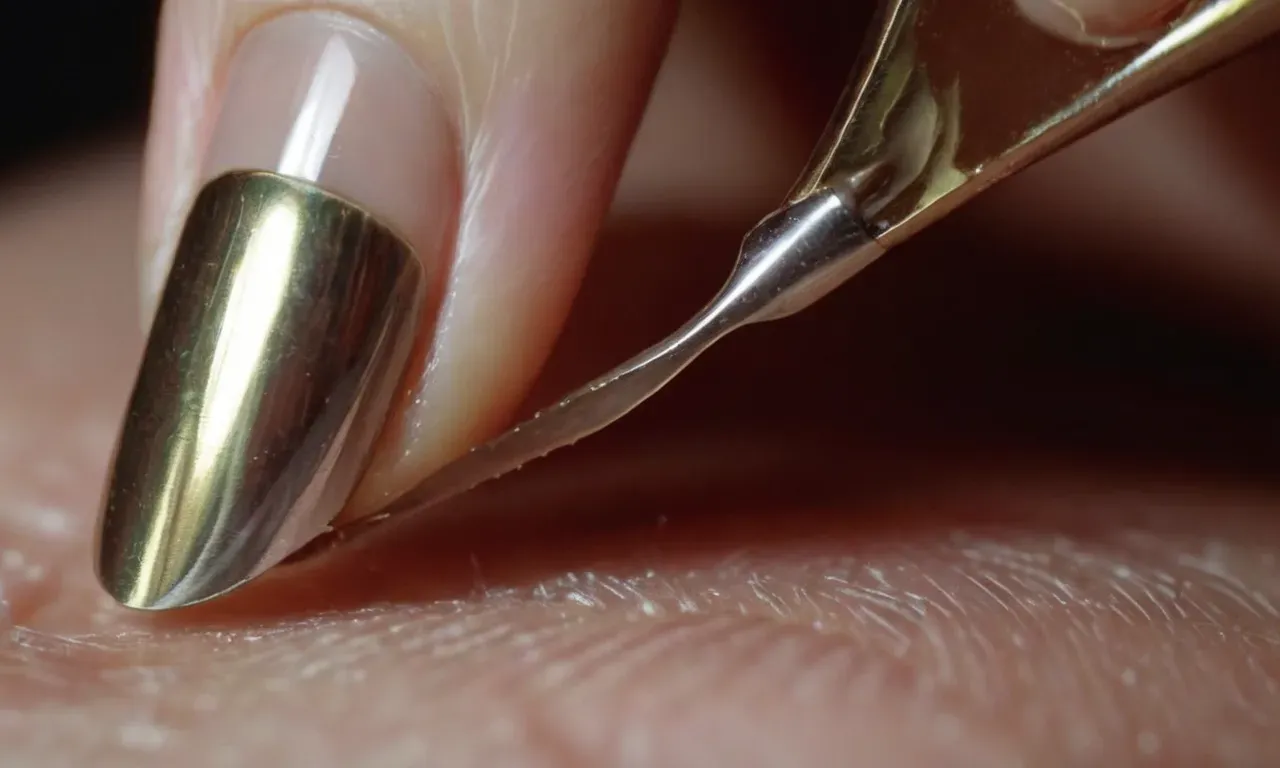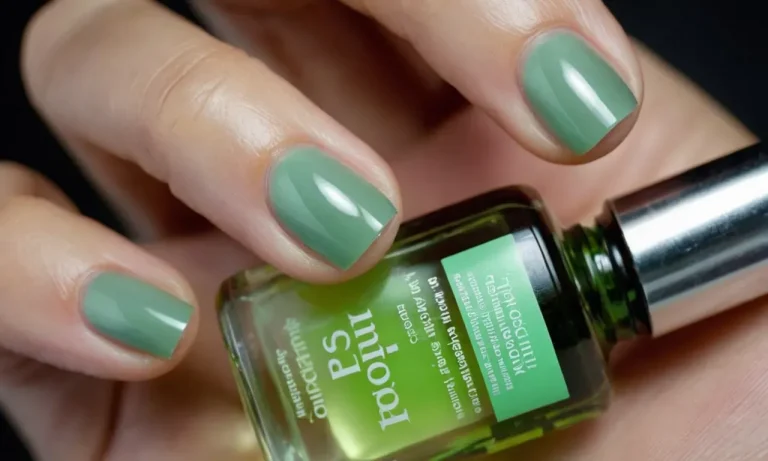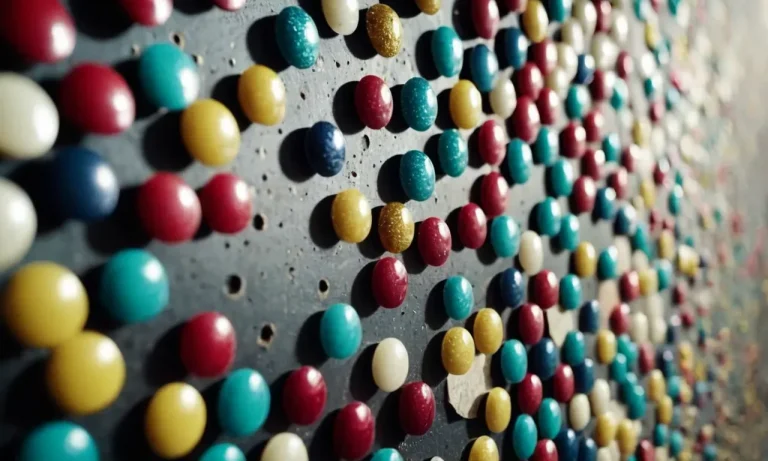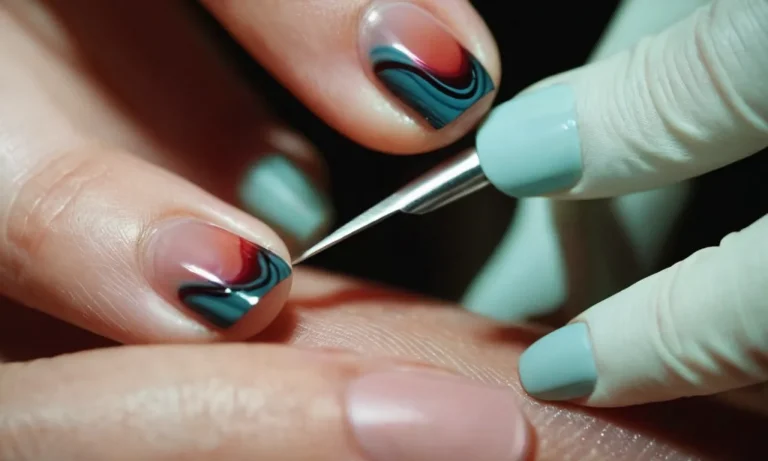How Long Does It Take For A Toenail To Grow Back? A Detailed Look
If you’ve ever lost a toenail, you know how annoying and sometimes painful it can be. A lost toenail leaves your toe vulnerable and exposed. The big question is, how long does it take for a toenail to grow back fully?
In this comprehensive guide, we’ll walk you through everything you need to know about toenail regrowth.
If you’re short on time, here’s the quick answer: On average, it takes about 6 months for a toenail to grow back completely after being lost or removed. However, it can take up to 18 months for the new nail to fully replace the lost one.
What Causes Toenails to Fall Off?
There are several potential causes for toenails to fall off, including injury or trauma, fungal infections, and underlying medical conditions. Losing a toenail can be painful and inconvenient, so it’s important to understand the reasons it may occur.
Injury or trauma
Physical trauma is one of the most common reasons for toenail loss. Stubbing your toe, dropping something on it, or repeated pressure from shoes that don’t fit properly can all lead to a bruised nail or detached nail bed. This separates the nail from its root, causing it to eventually fall off.
Injuries that break bones in the toe may also cause nail loss if blood flow to the nail bed is disrupted.
Fungal infections
Toenail fungus, medically known as onychomycosis, is a very common infection that can make nails thick, brittle, and distorted. As the fungus progresses, it often causes nails to detach from the nail bed and fall off.
Onychomycosis tends to affect older adults, people with diabetes or other conditions that impair circulation, and those with weak immune systems. Preventing fungal toenail infections through good hygiene and avoiding walking barefoot in public showers or pools can help reduce nail loss.
Medical conditions
Certain underlying diseases and disorders can indirectly lead to toenail loss in some cases. Psoriasis, eczema, and autoimmune disorders may cause nail changes that weaken their attachment to the nail bed.
Poor circulation from conditions like peripheral artery disease can also starve nails of oxygen and nutrients. Diabetes in particular is a major risk factor, as high blood sugar often contributes to poor circulation and nerve damage in the feet and toes.
Other culprits include thyroid disease, anemia, and vitamin deficiencies. Kidney disease can also create an optimal environment for fungal toenail infections. Together, these chronic diseases can increase susceptibility to injury and infection, raising the risk of detached or loose nails.
stages of Toenail Regrowth
Loss and Healing
When a toenail is lost due to injury, infection, or other causes, the nail bed underneath goes through distinct stages of healing. The healing process takes around 6-12 months to fully complete. Here’s a quick overview of what happens:
- Within the first week after loss, a scab will form over the nail bed as it starts healing. Keeping the area clean and protected is important during this time.
- Over the next few weeks, the scab comes off and the nail bed forms healthy new skin known as granulation tissue. This is an important step, as the new nail will eventually grow from the nail matrix within this tissue.
- It takes 4-6 weeks for the nail bed to be fully covered with new skin. Most of the swelling goes away during this time.
- From 6-12 weeks, the nail bed continues to smooth out and normalize in texture and contour.
Proper wound care speeds up healing. Seeing a podiatrist can be helpful to make sure the nail bed is healing properly before the new nail starts growing in.
Early Regrowth
Once the nail bed has healed and formed new nail matrix tissue, the toenail can start growing back. The first signs of regrowth happen around 2-3 months after toenail loss.
Here’s what to expect as a new nail starts coming in:
- A small nail spur may be visible at the base around 2 months. This is the very start of the new nail forming.
- Over the next few weeks, the nail spur grows longer, extending towards the toe tip.
- By month 3 or 4, around a quarter of the nail has visibly regrown. The new part is softer and more flexible than a mature nail.
- It typically takes 4 to 6 months for the nail to grow about halfway down the nail bed.
The new nail will likely look odd at first. It may have grooves or ridges and be somewhat misshapen. This is normal – it takes time for the nail to normalize as more of it grows in.
Maturation
It takes 8 to 12 months for a toenail to grow back completely. Once the nail has reached full length, it still needs additional time to mature and harden into a normal nail:
- From months 8 to 12, the nail continues growing out to reach the end of the nail bed.
- Around 12 months, the toenail has fully regrown, although it still appears softer and more flexible than adjacent nails.
- Over the next several months, the nail continues to normalize in color, shape, thickness, and texture as it matures.
- Full maturation takes around 18 months from the initial toenail loss.
Proper toenail care like trimming and filing helps the nail grow in smoothly. Biotin supplements support healthy regeneration. If any problems arise, see a podiatrist promptly.
Factors That Affect Regrowth Time
Age
The age of a person significantly impacts how fast their toenails grow back after injury. Generally, younger people have a quicker nail growth rate than older adults. This is because fingernail and toenail growth slows as we age due to decreased circulation and cell turnover.
Teenagers may regrow a toenail in 4-6 months, while seniors could take 9-12 months to fully regrow the nail.
Health and Nutrition
Good health and proper nutrition help optimize toenail regrowth. Getting adequate protein, vitamins, and minerals supports quick nail growth. Deficiencies in iron, zinc, biotin, and other nutrients can contribute to slower growth.
Underlying health conditions like anemia, diabetes, and peripheral vascular disease can also impede circulation and cell growth, delaying toenail regrowth.
Damage Severity
The more severe the initial toenail injury, the longer full regrowth will take. If the nail root remains intact, a new nail can regrow in 3-6 months. However, if the entire nail and root are damaged or removed, it may take 9-12 months to completely regrow.
Partial loss of the nail bed usually takes 6-9 months to fully grow back. More severe injuries like crushed nails require reconstructive toenail surgery and can take over 12 months for full regrowth.
Toenail Care
Proper care after a toenail injury helps optimize regrowth. Keeping the nail bed clean and dry can prevent infection which slows healing. Using an antifungal polish or cream helps prevent fungal infection which can distort regrowth.
Avoiding further trauma by wearing shoes that don’t press on nails will support proper regrowth. Trim remaining nail carefully as it regrows to encourage straight growth. Biotin supplements may also help strengthen new nail growth.
Tips for Healthy Toenail Regrowth
Keep the area clean and dry
Keeping the toenail area clean and dry is crucial for healthy regrowth. Gently wash the feet daily with mild soap and water and be sure to dry thoroughly, especially between the toes. Allowing moisture to remain can allow fungus or bacteria to take hold and hinder the growth of new, healthy nails.
Using an antifungal foot powder like Lotrimin can help absorb excess moisture and has added antifungal properties as well.
Use an antifungal if needed
If a fungal infection caused the loss of the toenail, it’s important to treat the infection as the nail regrows to prevent recurrence. Over-the-counter topical antifungal treatments containing ingredients like clotrimazole or terbinafine can be applied directly to the nail bed.
For more stubborn fungal toenail infections, an oral antifungal medication may be prescribed by your doctor, like Lamisil (terbinafine) or Diflucan (fluconazole). Completing the full course of treatment will help ensure the new toenail grows in fungus-free.
Take supplements
Certain supplements and vitamins have been shown to support quick and healthy nail growth. Biotin is essential, while other key nutrients include vitamins C, D, and E, iron, zinc, and silicon. A supplement targeted for hair, skin, and nails like Vitamin Shoppe Nails Hair Skin contains many of these in optimal ratios.
Proper nutrition from a balanced diet also provides the essential building blocks.
Wear protective footwear
Wearing properly fitted shoes and socks that wick away moisture can help prevent injury while the new toenail grows in. Closed toe shoes provide protection against stubbing the sensitive nail bed. Protective canvas shoes, water shoes for wet environments, and breathable athletic shoes are good options.
Socks containing silver fibers have microbial properties that discourage bacterial or fungal growth, like Copper Compression socks.
See a doctor for underlying issues
In some cases, an underlying health condition could be impacting toenail growth. Diabetics often have nail disorders and poor circulation that affect regrowth. Psoriasis and eczema can also manifest in nails. Seeing your doctor to treat any underlying problem is key for optimal regrowth.
They may recommend specialized wound care including medications or laser treatments to improve nail bed health, especially for fungal infections or injuries. Addressing overall nutrition and lifestyle factors can support your body’s natural healing as well.
When to See a Doctor
Persistent pain or discomfort
If you have ongoing pain or discomfort in your toenail area that does not get better with home treatment, it is important to see your doctor. This could be a sign of an underlying condition that needs medical attention. Persistent pain can greatly impact your quality of life and everyday activities.
Discoloration or thickening
Noticeable changes in the color or thickness of your toenail can also warrant a trip to the doctor. Dark colored streaks, crumbling edges, or a nail that seems to be growing unusually thick can all be signs of a fungal infection or nail injury that requires treatment.
No regrowth after 4-6 months
If your toenail has fallen off due to trauma, you would typically expect to see some regrowth after 4-6 months. If no new nail growth is visible by this time, seeing a podiatrist is recommended. The doctor can examine your toe, determine why regrowth is not occurring, and discuss treatment options to encourage healthy new nail growth.
Signs of infection
Bacterial or fungal infections can quickly attack an injured nail bed and surrounding skin. Some signs to watch out for are redness, swelling, foul odor, drainage, increased warmth in the area, red streaks, fever or chills. If you notice any of these infection warning signs, promptly contact your doctor for diagnosis and treatment with antibiotic or antifungal medications.
Conclusion
The regrowth of a lost toenail can seem frustratingly slow. But with proper care and patience, your toenail should return in around 6 months. Make sure to monitor the nail bed for infection and see a doctor if you have any concerns. With time, your toe will be back to its usual protective self.







